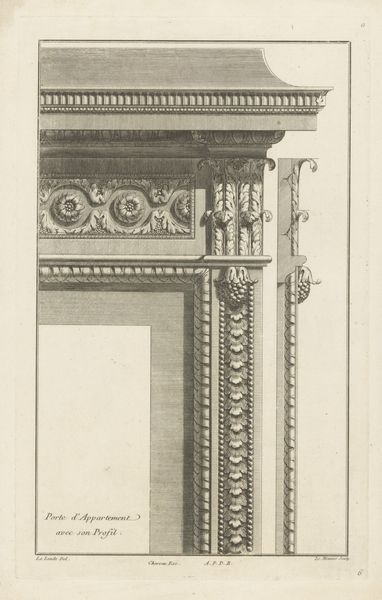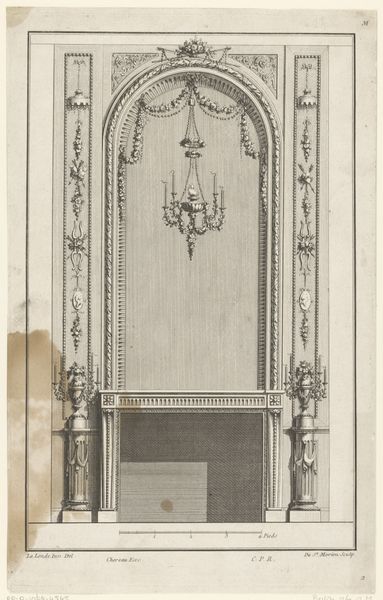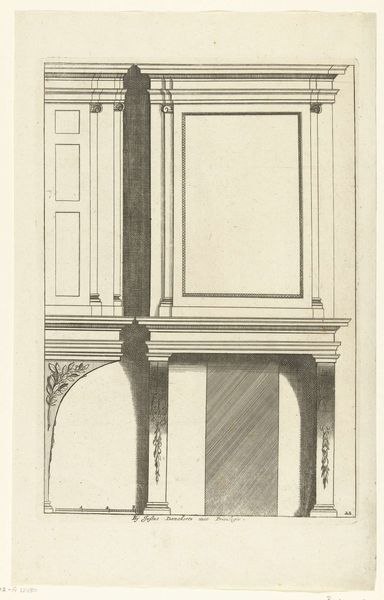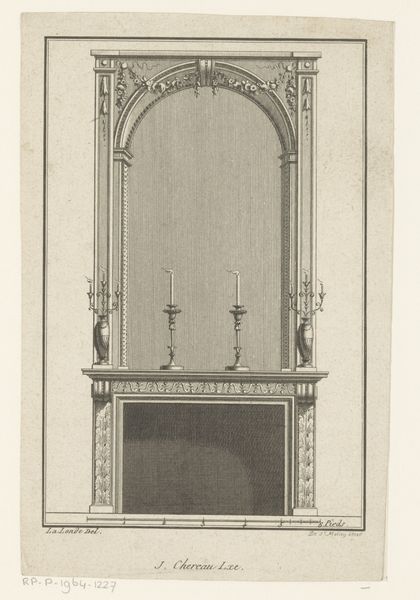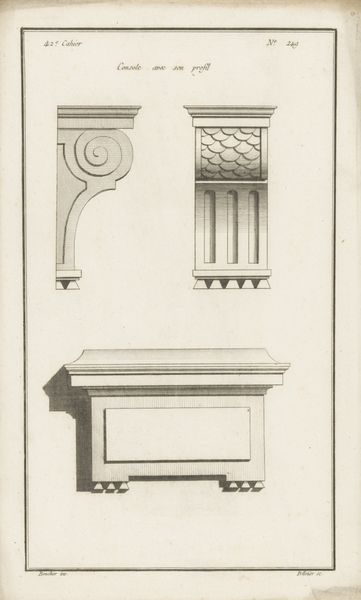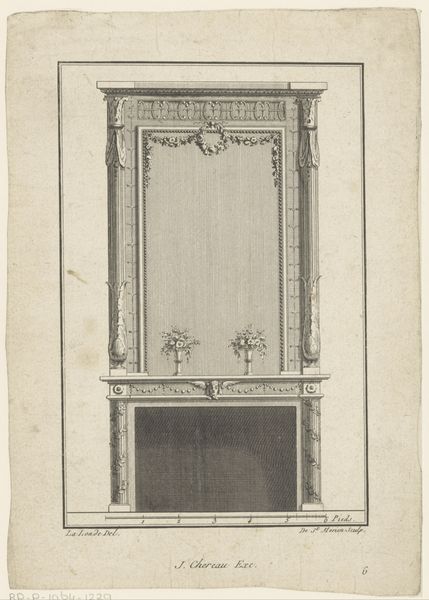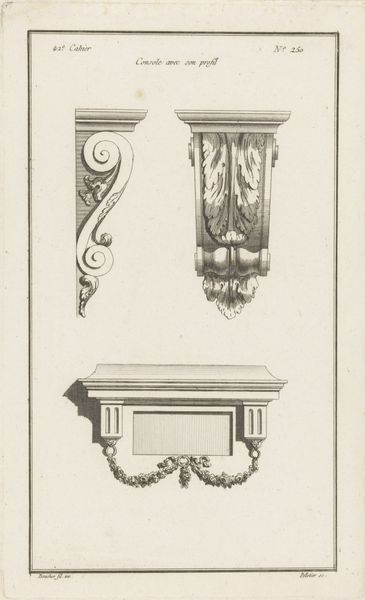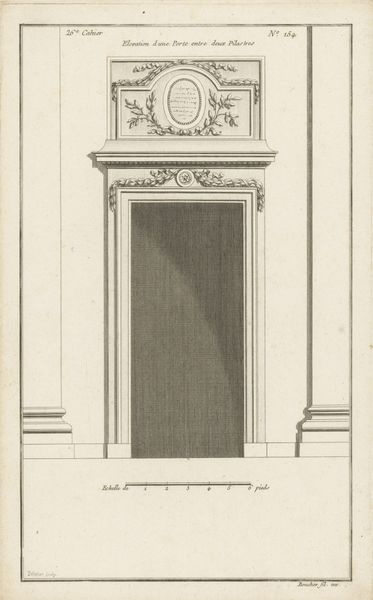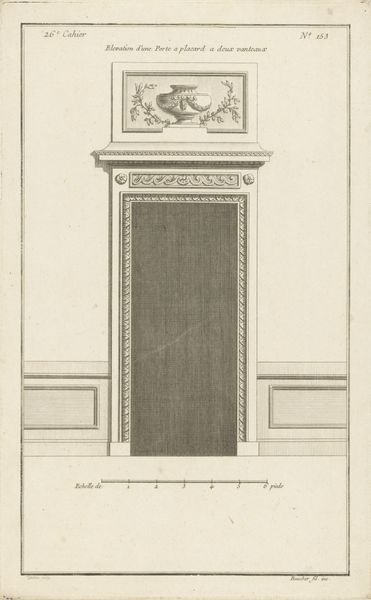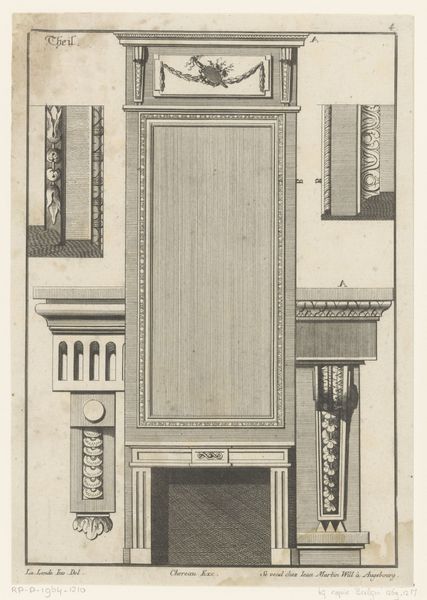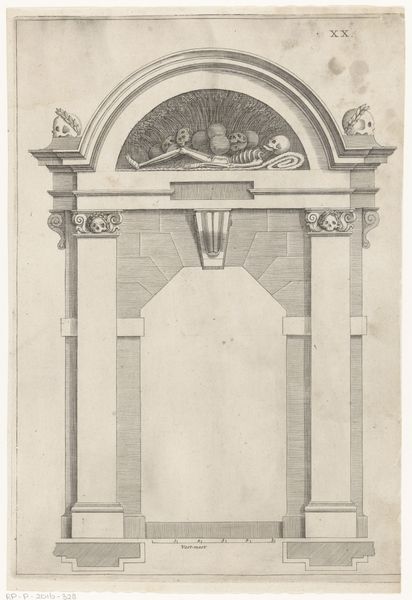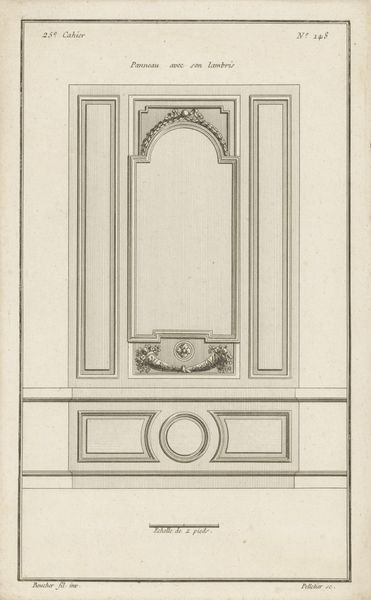
drawing, print, engraving, architecture
#
drawing
#
neoclacissism
# print
#
old engraving style
#
form
#
geometric
#
line
#
engraving
#
architecture
Dimensions: height 343 mm, width 217 mm
Copyright: Rijks Museum: Open Domain
Editor: This engraving, entitled "Deurlijst," was created between 1784 and 1785 by C. Le Meunnié. It's a detailed study of a doorframe. The precision is striking. What can you tell me about the context of this work? Curator: Well, it immediately speaks to the rise of Neoclassicism and its impact on architectural design and the decorative arts. The late 18th century was a time of profound social change and revolutions, and the move towards classical forms was, in part, a rejection of the perceived excesses of the Rococo period. It's a deliberate choice laden with socio-political implications. Does the print suggest anything about who it was meant for? Editor: Given the architectural subject matter and the style, maybe wealthy homeowners who wanted to design rooms in the latest fashion? Curator: Exactly. This wasn't merely decorative; these kinds of engravings functioned as blueprints, guides for artisans, and symbols of status for the patron. Consider how access to such imagery would dictate who could participate in this aesthetic and the social hierarchies that were therefore perpetuated. What else do you observe about the image? Editor: The geometric precision of the lines and forms. Everything seems measured and calculated, aiming for ideal proportions, in contrast to the more fanciful lines in previous styles. Curator: Absolutely. This is where the concept of 'form' takes on considerable cultural weight, connecting art to scientific rationalism prevalent during the Enlightenment. The piece highlights the critical link between aesthetics and politics of design, emphasizing the institutional power structures dictating artistic production. Editor: That gives me a lot to think about, thank you. I can definitely see how Neoclassicism represented more than just a shift in artistic taste. Curator: It reveals how art continuously reflects the complexities of society. The close looking, questioning of its context and production reveals not just the object, but also broader socio-political undercurrents of the late 18th century.
Comments
No comments
Be the first to comment and join the conversation on the ultimate creative platform.
